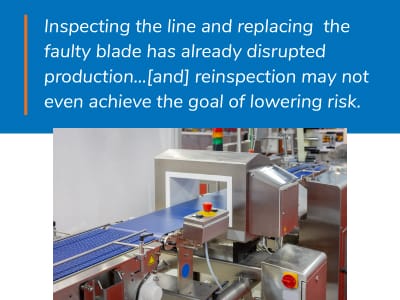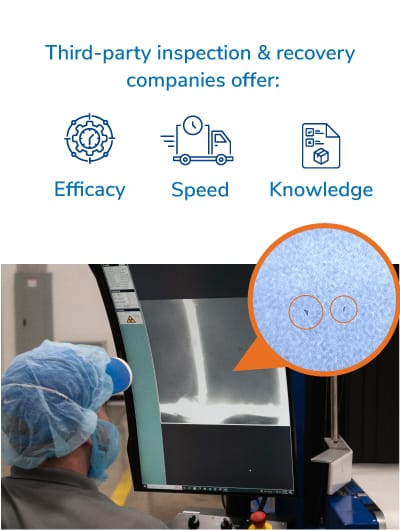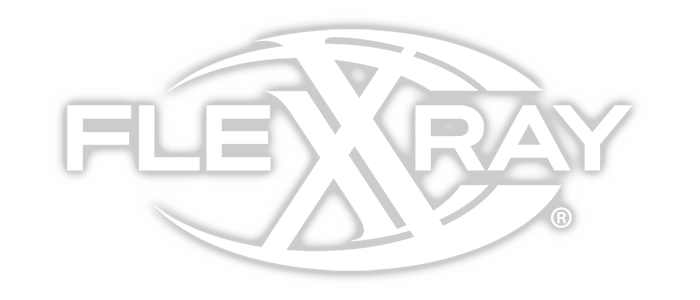Picture this scenario: in a bread manufacturing facility, about one-third of the way into a production run, a metal detector placed at the end of the line begins rejecting product. Following internal procedures for situations like this one, operators process the rest of the batch and set aside all product beginning from the first reject until the end of the run. The total product set aside amounts to 75,000 pounds.
Line inspection reveals that the problem originated in the blender, where one of the blades began to flake due to metal-on-metal contact. When this happens, the first fragments that come off are very small—smaller than an in-line metal detector can discover—and become larger as the damage continues.
Based on this, the bracketed product is expanded to include the first part of the batch as a precautionary measure. Now, the product on hold amounts to 100,000 pounds.
What should the next step be?
One straightforward option would be to ship the product that was not rejected by the metal detector. However, that would still potentially expose the company to consumer complaints and a recall, despite the fragments being too small to pose a choking hazard.
The Ineffective Option
Another option to mitigate risk would be to put all the product on hold through the in-line metal detector again, in order to find more contaminants. However, this option has two serious drawbacks.
- Downtime: at this point, inspecting the line and replacing the faulty blade has already disrupted production. An internal reinspection will prolong the forced stop, causing a cascade effect on the rest of the schedule and possible inventory tax implications.
- Effectiveness: reinspection may not even achieve the goal of lowering risk. If the smaller metal fragments were not picked up the first time, a second run is unlikely to find them. Even if the metal detector is recalibrated to increase sensitivity, it might not be possible—for example, if the product has high conductivity, higher sensitivity might lead to false positives.
The limited efficacy of internal rework is particularly critical for the 25,000 pounds that are potentially contaminated with smaller metal fragments. The quickest and safest solution would be to dispose of this part altogether and reprocess it from scratch. That, however, would generate a large amount of food waste—with a negative impact on the company’s sustainability score and metrics—and would double production costs.
In the end, opting for internal rework might not even help production resume sooner, as the new run will also require extra ingredients and packaging materials, which may not be in stock or readily available from suppliers.
A Better Option
Shipping the batch of on-hold product to a foreign material inspection and recovery company to have them do the rework helps avoid all the previously mentioned issues. Typically, an inspection company operates in a dedicated facility, where products are put through a medical-grade X-ray system at a slower speed than what happens during production, while an operator checks the items one by one on the screen, searching for any possible foreign objects.
There are three main advantages that food manufacturers can gain from using a reinspection and recovery provider:
- Efficacy: thanks to the slow pace of reinspection, the high-sensitivity equipment and the specific training of personnel, a specialized service is more likely to find the smaller contaminants that in-line equipment will not detect, whether they’re metals or low-density materials such as plastic and bone.
- Speed: most providers will be able to turn around a semi load of product in as few as five hours, which is particularly important for perishable foods or situations with tight deadlines.
- Knowledge: a reinspection and recovery service can simply identify the contaminated products and ship those that are fit for consumption back to the manufacturer. However, they can also provide insights into what caused the contamination in order to prevent similar incidents in the future and, potentially, solve disputes with suppliers if contamination is caused by an ingredient rather than at the facility.
Conclusions
When a large quantity of products is on hold due to possible foreign material contamination, a food manufacturer will find itself pressed between the need to salvage as much inventory as possible and protect its reputation and consumers’ health. However, the two typical solutions—carrying out an internal reinspection or disposing of part (or all) of the products—are both costly and ineffective.
A much better option is to hire a third-party inspection and recovery service. Its capability to find more and smaller contaminants in less time will allow food companies to resume production quickly, keep most of the batch out of the landfill and minimize the risk of shipping contaminated products. The ideal reinspection provider must be fast and accurate and maintain high hygiene standards at the facility to prevent microbiological contamination of products during rework.
There are five must-have requirements that food manufacturers should expect:
- Fast turnover time for the rework, within five hours or less.
- Medical-grade X-ray technology to guarantee higher detection capabilities.
- Variety of additional services, such as package re-bundling, reporting and temperature-controlled facilities.
- Track record of successful reworks with different food products and contaminants.
- USDA- and FDA-registered facilities that comply with Good Manufacturing Practices and food safety regulations.




